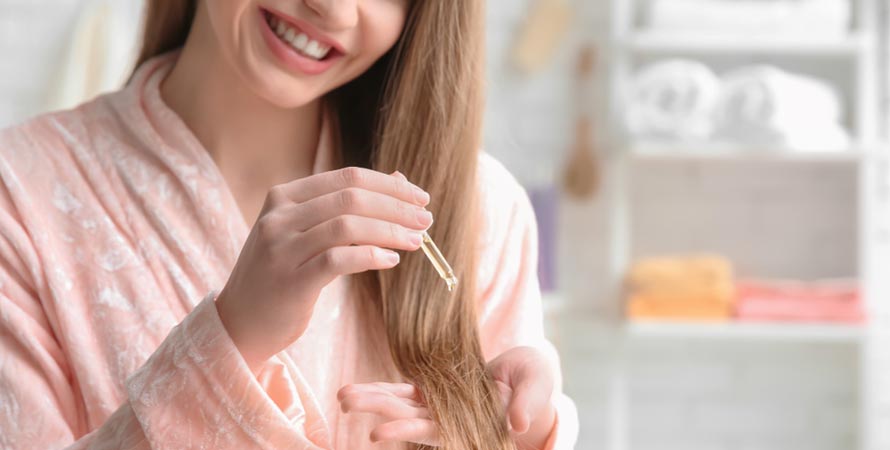Bleached Hair Care – 7 Things Everyone Should Know

The impact of bleaching is significant, and it’s not just the appearance that’s affected—your hair takes a beating whenever you go even a few shades lighter. This process can drastically reduce the natural moisture in hair follicles, so be cautious; your new color may look amazing, but keep in mind, the damage can vary from strand to strand, so after your treatment is complete, it’s important to take good care of the newly-bleached hair to keep it healthy and shiny.
A professional treatment is the best way to ensure you’ll get good results, but let’s be real—who has $120 to drop on a bleach job? Bleaching your hair yourself can save you some money, but only if you know what you’re doing; if not, bleached hair can become dry and brittle in no time. When that happens, things escalate quickly—brittle hair breaks off easily when brushed or styled, which ultimately leads to thinning hair.
While bleaching your hair is a great way to dramatically change your look or help you cover grays, there’s no doubt that the process can be tough on the health of your hair. Bleaching hair can expose it to chemicals that may weaken the strands and leave them dry, frizzy, and damaged. Over time, bleached blonde hair can also become dull and lack shine due to all the damage done to the cuticle during the process.
Still interested in going blonde? Well, the good news is, there are steps you can take to reduce the damage, whether you have the treatment done at home or in the salon. Bleached hair needs plenty of moisture and protein to recover between treatments. Proper aftercare helps protect your investment while encouraging healthy cuticles and roots that make your color look fresh for longer periods of time.
Below, we will talk about taking care of bleached hair, with some tips on how to maintain its beautiful appearance without compromising its health.
Tips to Keep Your Bleached Hair Healthy
1. Avoid Washing Your Hair Frequently
The first, and simplest, method to maintain the health of your bleached hair is to limit the number of times you wash it. It’s not necessary to stop washing for weeks on end; simply decrease the number of times from what you’re currently doing. For most people, twice a week seems to be the ideal balance.
Also, after bleaching your roots, it’s a good idea to go even longer without washing — at least a full week. Your hair will not appear excessively greasy during this time because it is really dry from the treatment.
2. Avoid Heat Styling

It may be tempting to use styling aids to help your newly-bleached hair look even better, but the heat from straighteners, curling irons, and dryers will simply dry your hair out even more. So, until you can restore the health of your hair, or at least give it a chance to recover from the bleaching process, it’s best to find alternative ways to style it. Try letting your hair dry naturally and use equipment that doesn’t require heat, such as foam hair curlers.
3. Stick to the Roots
When you do touch up your roots, avoid getting any bleach on the areas that don’t need lightening. Use a brush to apply the bleach only to the unbleached roots and if you find this tricky, especially at the back of your head, ask a friend to help. Bleaching hair that has already been previously lightened is the fastest way to end up with locks that look fried!
4. Choose the Right Towel

You may think that all towels are created equal, but this is definitely not the case. A good-quality towel will be absorbent, yet gentle on your hair to prevent further harm. A microfiber hair towel is a good choice or, even better, a microfiber hair wrap that you can leave on to help your hair dry naturally, with minimal damage.
5. Lower the Water Temperature
It may take some getting used to, but consider using lukewarm water to wash your hair. Use your fingers to wet your hair first with warm water and then turn on the cold tap to give the hair a quick spray, sealing the cuticle layers for a smoother, softer texture and appearance.
6. Hair Oil is Your New Best Friend

You may be used to putting conditioner on your hair, but oil is better to keep it moisturized after bleaching. There are many hair oils you can buy, but it’s easy to make your own hair oil for this purpose; whichever you use though, always avoid harsh chemicals and parabens because they can also strip color and create further damage.
7. Get Regular Haircuts
Even if you’re growing your hair, it’s important to get it cut on a regular basis to remove dead split ends. Make sure your stylist knows that you want to keep as much length as possible if this is the case; however, if they suggest you go shorter initially, for example, if your hair is extremely damaged, it’s wise to take their advice.
Conclusion
As you can see, by making a few changes to the way you care for it, you can still bleach your hair and enjoy bright, beautiful blonde locks that are healthy, shiny, and smooth.
Deprecated: Function WP_Query was called with an argument that is deprecated since version 3.1.0!
caller_get_posts is deprecated. Use ignore_sticky_posts instead. in /home/healthwebmagazin/skinformulations.com/wp-includes/functions.php on line 6121





